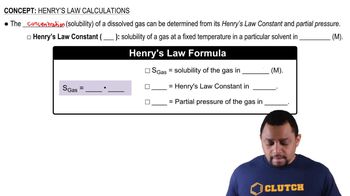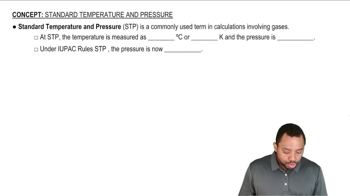Here are the essential concepts you must grasp in order to answer the question correctly.
Henry's Law
Henry's Law states that the amount of gas that dissolves in a liquid at a given temperature is directly proportional to the partial pressure of that gas above the liquid. This relationship can be expressed mathematically as C = kH * P, where C is the concentration of the gas in the liquid, kH is the Henry's law constant, and P is the partial pressure of the gas.
Recommended video:
Solubility
Solubility refers to the maximum amount of a substance that can dissolve in a solvent at a specific temperature and pressure. For gases, solubility is influenced by factors such as temperature and pressure, with higher pressures generally increasing solubility. In the case of H₂S, its solubility in water can change with temperature and the partial pressure of the gas.
Recommended video:
Standard Temperature and Pressure (STP)
Standard Temperature and Pressure (STP) is a reference point used in chemistry, defined as 0 °C (273.15 K) and 1 atm pressure. At STP, the behavior of gases can be predicted using the ideal gas law, and it serves as a baseline for comparing the solubility and other properties of gases in different conditions. Understanding STP is crucial for calculating changes in solubility and gas behavior.
Recommended video:
Standard Temperature and Pressure




